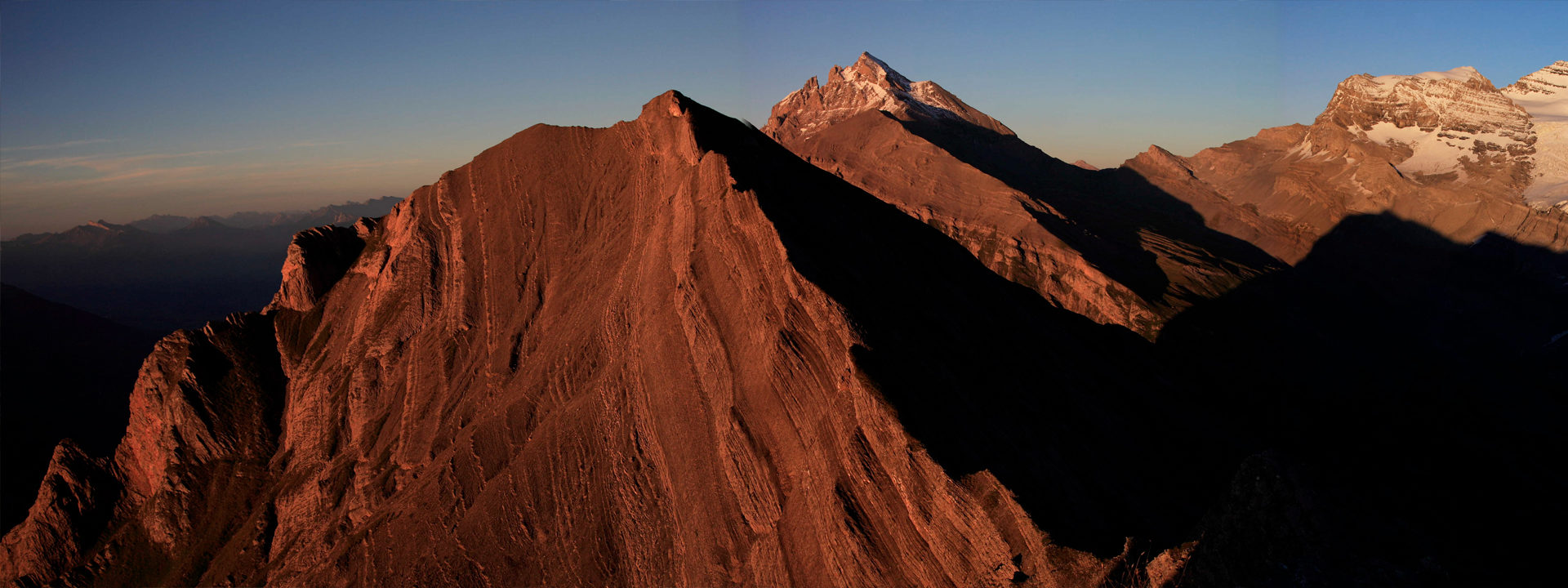The rock layers hidden underneath Region Dents du Midi were formed over three geological periods. They range from the Mesozoic era, dating from 252 million to 66 million years ago, to the Cenozoic Era, from 65 million years ago to the present day, and especially the Quaternary period, which represents the most recent 2.6 million years of Earth’s history.
These successive layers began as sedimentary deposits that accumulated at the bottom of a giant prehistoric ocean called the Tethys Sea over a period of more than 140 million years. Gradually, these sediments solidified through diagensis, a process in which physical and chemical changes transform sediment to sedimentary rock. As a result, the base of the Dents du Midi mainly consists of sandstone and another sedimentary rock called Val d’Illiez Flysch.
You may have already heard or read that the Dents du Midi and Dents Blanches are turned upside down. That’s true ! Look at the folded layers of rock at Col de Bossetan and you’ll see what we mean. For more information on this phenomenon, you can check out the references below.
During the last three million years, after the Alps had already formed, the planet experienced significant cooling, characterised by the arrival of four major glacial periods These ice ages shaped the landscape, especially the Würm glaciation (120,000 to 12,000 years ago) which was the last glacial period in the Alpine region.
Today, magnificent remnants of this glacial period can still be found in the Chablais. Massive blocks of granite, called glacial erratics, were transported in the ice, and left orphaned when the Rhône Glacier and the Mont-Blanc Glacier retreated 12,000 years ago. The massive Pierre des Marmettes, big enough that someone built a house on it, is one striking example.
Every step you take on the trails that crisscross our region falls on millions of years of geologic history—buried rocks, fossils, and crystals that have a tale to tell if you know how to listen.
